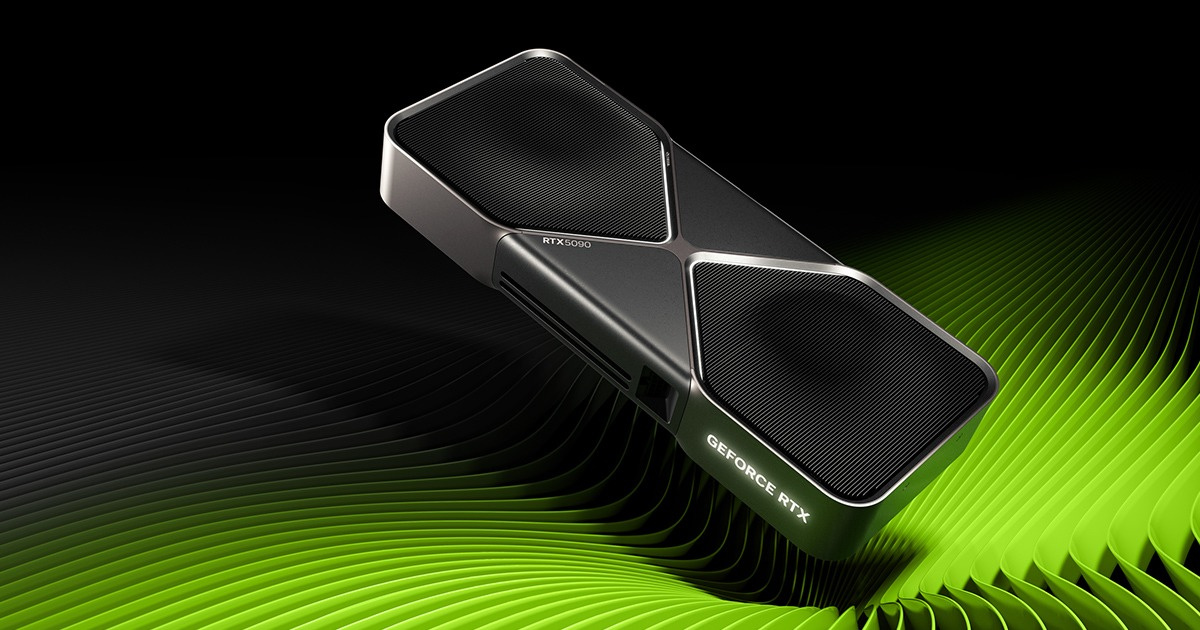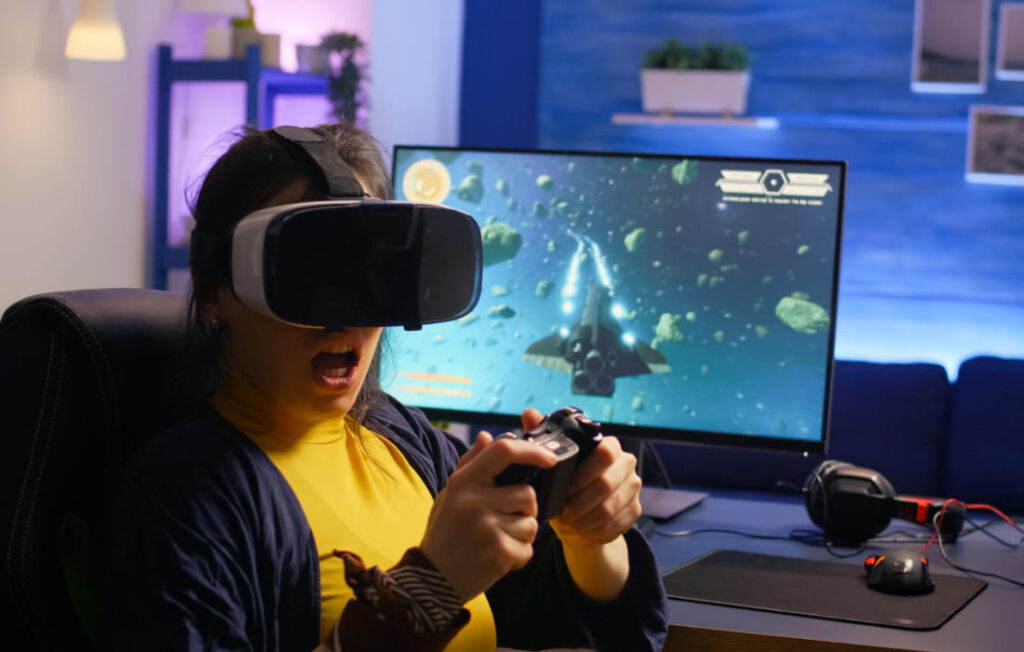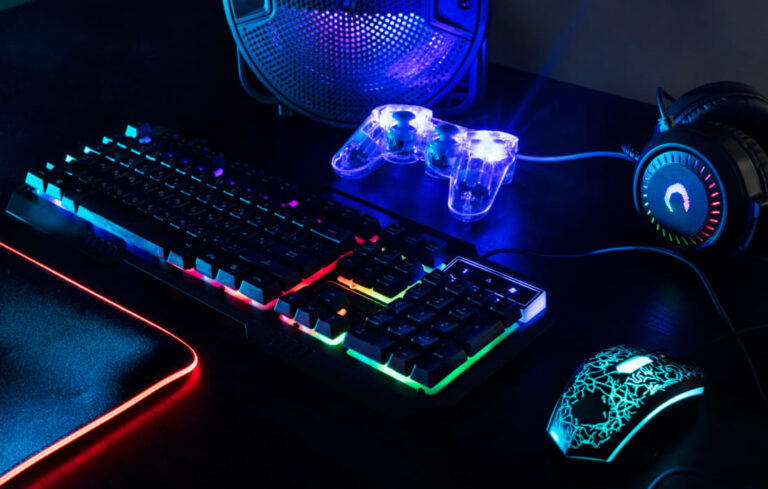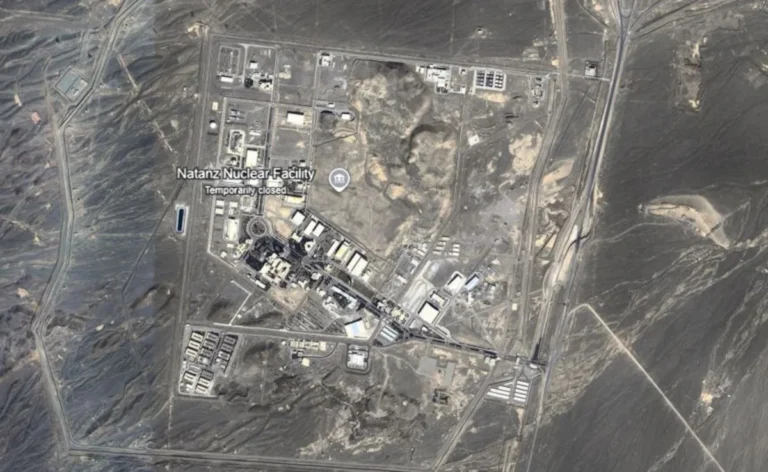
Gaming has come a long way since its humble origins, evolving into an immersive experience that transports players into intricate digital universes. Central to this transformation is the unsung hero of gaming hardware — the graphics card. While it might not be the flashiest piece of equipment, the graphics card holds the power to shape the very fabric of the virtual worlds we explore.
From the intricate designs of towering castles to the subtle ripples in a tranquil pond, graphics cards bring these digital landscapes to life with an attention to detail that captivates our senses. But their role extends beyond mere visual appeal; graphics cards are the architects of immersion, crafting an experience that blurs the line between reality and fantasy.
Role of Graphics Cards in Gaming
At the heart of every gaming setup lies the graphics card, a small yet mighty device tasked with the colossal responsibility of rendering the intricate visuals that gamers feast their eyes upon. While other components such as processors and memory contribute to the overall performance, it’s the graphics card that takes the visual aspects to new heights.
Importance of Immersion
Imagine navigating through a medieval kingdom, the sun casting long shadows across cobblestone streets, and the sound of rustling leaves creating an ambience that pulls you deeper into the experience. Graphics cards are the ones responsible for weaving this tapestry of visual and auditory marvels, allowing us to escape into these alternate realities and forget, for a while, the world outside.
n this article, we’ll journey through the realm of graphics cards, uncovering their inner workings and the profound impact they have on the gaming experience. From the evolution of gaming graphics to the cutting-edge technologies that push the boundaries of realism, we’ll embark on a quest to understand how these unassuming devices shape the way we play and perceive the digital worlds that beckon.
So, buckle up as we dive into the heart of gaming visuals, exploring the magic that graphics cards bring to our screens and the profound impact they have on our gaming odysseys. Prepare to witness the behind-the-scenes marvels that transform simple code into breathtaking vistas, and let’s unravel the enigma of the graphics card’s role in crafting unforgettable adventures.
Understanding Graphics Cards
What Are Graphics Cards?
Before we delve into the intricate mechanisms that make gaming visuals a reality, let’s demystify the cornerstone of this phenomenon: graphics cards. At its core, a graphics card is a dedicated piece of hardware designed to perform one vital task — translate lines of code into the mesmerizing visual landscapes that captivate gamers worldwide.
Think of a graphics card as an artist’s canvas, waiting to be adorned with the brushstrokes of digital wizardry. When you launch a game, your computer’s central processing unit (CPU) hands over the raw data to the graphics card, which then works its magic, transforming binary data into the breathtaking imagery that envelops your screen.
Role in Rendering Images
The process of rendering involves crafting each individual pixel that populates your screen. From the tiniest dewdrop on a leaf to the towering skyscrapers of a futuristic cityscape, every element you see in a game is meticulously crafted by your graphics card. It takes the numerical data provided by the game and transforms it into the visual feast that keeps players glued to their monitors.
Graphics Processing Unit (GPU)
At the heart of the graphics card lies the Graphics Processing Unit, or GPU — a true marvel of modern engineering. The GPU is the powerhouse responsible for executing complex mathematical calculations at lightning speed. Its parallel processing capabilities allow it to handle immense amounts of data simultaneously, a feat that’s crucial for rendering lifelike visuals in real time.
Significance in Handling Visual Data
Imagine the graphics card as a conductor leading an orchestra of pixels, each playing its own part to create a symphony of breathtaking visuals. While the CPU orchestrates the overall performance of your computer, the GPU specializes in handling the specific demands of rendering graphics. Its dedicated design and lightning-fast calculations ensure that even the most intricate scenes are brought to life with astounding detail.
In essence, the graphics card is the magician behind the curtains, turning strings of code into vibrant, dynamic scenes that immerse players in their chosen worlds. Without the graphics card’s meticulous craftsmanship, games would remain as mere strings of instructions, devoid of the awe-inspiring landscapes that make virtual adventures so captivating.
In the upcoming sections, we’ll unravel the intricate components that make up a graphics card, exploring the technological wonders that enable it to process immense amounts of data and weave them into the tapestry of gaming visuals. Get ready to uncover the secrets that give graphics cards their undeniable allure and their unparalleled significance in the world of gaming.
Evolution of Gaming Graphics
Pixelated Beginnings to Lifelike Environments: Embarking on a journey through the annals of gaming history is like flipping through the pages of an ever-evolving visual story. The tale begins with humble pixelated sprites dancing across the screens of early arcade machines and home consoles. These pioneers laid the foundation for a revolution that would transform gaming graphics from abstract blocks to lifelike environments that defy the boundaries of imagination.
As technology advanced and computing power grew, so did the ambitions of game developers. What was once a collection of colorful squares representing characters and objects evolved into intricate 2D worlds, capturing the hearts of gamers with each new pixelated masterpiece. Players marveled at the ingenuity of games like “Pac-Man” and “Space Invaders,” where imagination filled the gaps left by limited graphics capabilities.
Technological Advancements Driving Progress: The turning point in the evolution of gaming graphics came with the advent of 3D graphics. It was as if gaming had awakened from a dream and stepped into a new dimension, where polygons replaced pixels and depth perception added a whole new layer of immersion. Titles like “Super Mario 64” and “Tomb Raider” introduced players to 3D environments that showcased the potential of this newfound dimension.
The pursuit of realism drove the gaming industry to push the boundaries of technological innovation. Graphical fidelity saw exponential growth as hardware manufacturers introduced increasingly powerful graphics cards and processors. Textures became more detailed, lighting effects more nuanced, and character models more lifelike. Gamers were transported to worlds that mirrored reality in ways that were previously unthinkable.
Fast forward to the present day, and we find ourselves standing on the precipice of a new era in gaming graphics. High-definition visuals, cinematic storytelling, and mind-bending realism are no longer the domain of a select few. Today’s graphics cards wield the power to create environments so vivid that players can almost feel the wind rustling through the virtual grass and the warmth of a virtual sun on their skin.
In the next section, we’ll explore the intricate components that contribute to the mind-boggling progress in graphics quality. From ray tracing that simulates the behavior of light to AI-driven enhancements that add an extra layer of polish, we’ll dive into the arsenal of technologies that continue to shape the visual landscape of gaming. Prepare to be amazed as we uncover the tools that bridge the gap between dreams and reality, transforming gaming graphics into a breathtaking work of art.
Graphics Cards Components and Specifications
Key Components of a Graphics Card: Unraveling the inner workings of a graphics card reveals a symphony of components working in harmony to craft the awe-inspiring visuals that grace your screen. Let’s dissect these components that form the beating heart of the graphics card.
- Graphics Processing Unit (GPU): The crown jewel of the graphics card, the GPU, is the powerhouse responsible for executing complex calculations that bring virtual worlds to life. It’s akin to the conductor of an orchestra, directing the performance of thousands of tiny tasks that result in the breathtaking visuals you experience.
- Video RAM (VRAM): Just like an artist needs a palette to create a masterpiece, a graphics card relies on VRAM — a specialized memory that stores textures, shaders, and other vital data. With ample VRAM, your graphics card can load and manipulate larger textures, enhancing the level of detail and realism in your games.
- Cooling System: As the GPU flexes its computational muscles, it generates heat — a formidable foe that can hinder performance. Enter the cooling system, a blend of fans, heat sinks, and innovative engineering. This system ensures that the GPU remains at an optimal temperature, preventing overheating and maintaining smooth performance.
Explanation of Specifications: Delving deeper into the intricate world of graphics cards, we encounter a tapestry of specifications that determine the card’s performance. These specifications act as the building blocks for the breathtaking visuals that immerse gamers in alternate realities.
- Clock Speed: Clock speed refers to the frequency at which the GPU’s cores operate. Higher clock speeds translate to faster calculations, resulting in smoother frame rates and quicker rendering of complex scenes.
- Memory Bandwidth: Think of memory bandwidth as a highway for data to travel between the GPU and VRAM. A wider highway allows for faster data transfers, enabling the graphics card to access textures and information swiftly, leading to improved performance and realism.
- CUDA Cores: CUDA cores are the worker bees of the GPU, responsible for executing computations in parallel. More CUDA cores mean the graphics card can handle more complex tasks simultaneously, enabling the rendering of intricate visuals without lag.
Contribution to Overall Visual Performance: The synergy of these components and specifications is the key to unlocking the full potential of your graphics card. A powerful GPU, ample VRAM, and efficient cooling system work in tandem to bring lifelike environments to your screen. Higher clock speeds and more CUDA cores enable the GPU to handle the demands of modern games with finesse, ensuring fluid motion and remarkable detail.
The graphics card’s ability to manage vast amounts of data swiftly, thanks to generous memory bandwidth, ensures that textures, lighting effects, and reflections are rendered with astounding realism. In the grand tapestry of gaming visuals, each component plays a role that contributes to the masterpiece that unfolds before your eyes.
With this newfound knowledge, you’re equipped to appreciate the intricate dance of components and specifications that elevate gaming graphics to an art form. As we move forward, we’ll explore the symbiotic relationship between graphics cards and frame rates, understanding how these elements harmonize to create an immersive gaming experience that transcends mere entertainment.
The Link Between Graphics Cards and Frame Rates
Graphics Cards, Frame Rates, and Smooth Gameplay: Picture yourself in the heart of a digital battlefield, a sword in hand or a gun aimed at your target. In this dynamic world, the seamless flow of action is a testament to the symbiotic relationship between graphics cards and frame rates. This connection is the cornerstone of a gaming experience that doesn’t just look good — it feels good.
At the heart of this relationship is the graphics card’s ability to render each frame of the game. A frame is a complete image displayed on your screen, and the speed at which these frames are rendered is measured in frames per second (FPS). The graphics card’s prowess determines how many frames it can churn out per second, directly impacting the fluidity and responsiveness of your gameplay.
The Concept of Frames Per Second (FPS) and its Impact: FPS is the heartbeat of gaming — the rhythm that defines the pace and intensity of the virtual world you inhabit. Think of FPS as the frames of a flipbook; the faster they flip, the smoother and more engaging the animation becomes. When FPS is high, your actions translate into immediate on-screen responses, immersing you in a world where every move feels natural and instantaneous.
On the other hand, low FPS can lead to choppy animations, delayed responses, and a disorienting experience. Imagine a battle unfolding in slow motion or a car race with erratic movements — it’s a far cry from the seamless action-packed adventure you envisioned.
Impact of Different Graphics Cards on FPS: As technology advances, so does the performance of graphics cards. A high-end graphics card can handle the demands of modern games, rendering intricate details, lush environments, and complex lighting effects without breaking a sweat. This translates to higher FPS, delivering a smoother and more enjoyable gaming experience.
Conversely, mid-range or lower-end graphics cards might struggle with the demands of graphically intensive games, resulting in lower FPS. This can lead to compromised visual quality and a less responsive gameplay experience.
Keep in mind that different games have varying graphical requirements. An open-world RPG with sprawling landscapes and intricate textures might demand more from your graphics card, impacting FPS. Conversely, a simpler, indie-style game might achieve higher FPS on the same hardware.
In essence, the graphics card is the puppet master behind the curtain, dictating the pace at which your digital adventure unfolds. Its performance directly influences the frames that paint your experience, determining whether you’re treated to a cinematic masterpiece or a jerky slideshow.
As we continue our journey, we’ll explore the groundbreaking technologies that amplify frame rates and elevate gaming visuals to new heights. From ray tracing that replicates the behavior of light to AI-driven enhancements that optimize performance, get ready to uncover the magic that transforms graphics cards into gateways to immersive realms.
Pushing Visual Boundaries: Ray Tracing and DLSS
Introduction to Ray Tracing and Realistic Lighting: Imagine standing in a virtual forest, the sunlight filtering through the leaves above and casting intricate shadows on the ground. Now, imagine that every beam of light behaves just as it would in the real world — bouncing off surfaces, creating reflections, and caressing every object it touches. This is the magic of ray tracing, a revolutionary technology that redefines realism in gaming visuals.
Ray tracing simulates the behavior of light in a virtual environment, resulting in lifelike lighting, reflections, and shadows. Instead of relying on pre-defined lighting effects, ray tracing calculates the path of individual rays of light as they interact with various surfaces. The result? A world that’s not just visually stunning, but behaves authentically, making every scene a masterpiece of dynamic lighting.
NVIDIA DLSS and Sharper Visuals: Enter NVIDIA DLSS, an innovation that takes the concept of image upscaling to a whole new level. DLSS stands for Deep Learning Super Sampling — a mouthful that translates to incredible visual fidelity. Through the power of artificial intelligence, DLSS sharpens images, improves detail, and enhances overall quality, all while maintaining or even boosting frame rates.
DLSS works by training deep learning algorithms on a vast amount of data, enabling the technology to understand the nuances of how images should appear. When a game utilizes DLSS, it renders images at a lower resolution and then uses AI-powered upscaling to reconstruct the visuals at a higher resolution. The result is a level of detail and clarity that would be taxing for even the most powerful graphics cards to achieve on their own.
Examples of Games Utilizing Ray Tracing and DLSS: The impact of ray tracing and DLSS can be witnessed in some of the most visually breathtaking games of recent times. Take “Cyberpunk 2077” for instance — the neon-soaked streets, reflective surfaces, and dynamic lighting are brought to life by ray tracing. DLSS enhances the experience further, allowing players to enjoy the game’s stunning visuals without compromising on performance.
“Control” is another prime example. With ray tracing enabled, the game’s environments transform into veritable labyrinths of light and shadow, adding an extra layer of atmosphere. DLSS takes the experience to the next level, ensuring that the intricate details are crystal clear, even in the midst of intense action.
These technologies are not just reserved for the AAA titles. Indie gems like “Minecraft” have embraced ray tracing to create astonishingly realistic worlds. And as DLSS becomes more prevalent, gamers can anticipate sharper visuals and smoother performance across a wide range of games.
In the upcoming sections, we’ll uncover the compatibility of graphics cards with different games, ensuring that you’re armed with the knowledge to optimize your gaming experience. Get ready to explore the fine balance between hardware capabilities and software demands, as we delve into the art of crafting a gaming setup that delivers the visuals you deserve.
Graphics Cards and Game Compatibility
Navigating Compatibility: Graphics Cards and Games In the ever-evolving landscape of gaming, ensuring that your graphics card dances harmoniously with the latest titles is essential for an enjoyable experience. With games becoming increasingly demanding, compatibility becomes a delicate dance between hardware capabilities and software requirements.
System Requirements and Settings Optimization: When you’re ready to embark on a new gaming adventure, the first step is to acquaint yourself with the game’s system requirements. These specifications outline the minimum and recommended hardware needed to run the game at different settings. Paying attention to these requirements can save you from frustration down the line.
Optimizing in-game settings is a crucial step in balancing visuals and performance. Adjusting settings like resolution, texture quality, and shadow detail can have a significant impact on FPS without compromising on the overall experience. Experimentation is key, as finding the sweet spot between eye candy and smooth gameplay is a delicate art.
Handling Upcoming Game Releases: Anticipation for upcoming game releases is akin to waiting for the curtain to rise on a much-anticipated performance. Ensuring your graphics card is up to the task requires a mix of research and foresight.
As release dates draw near, keep an eye out for official hardware recommendations from game developers. These recommendations provide insights into the level of performance you can expect from your graphics card and whether you’ll be able to enjoy the game at your desired settings.
Staying Future-Proof: Investing in a graphics card that can handle the latest games isn’t just about the here and now — it’s about future-proofing your gaming setup. As technology advances, games will demand more from your hardware. Opting for a graphics card with a bit of extra horsepower can extend the lifespan of your setup, ensuring you can continue to enjoy upcoming titles without constant upgrades.
Balancing Performance and Excitement: Gaming is an exhilarating adventure, and your graphics card is the vessel that carries you through these immersive worlds. By staying informed about system requirements, optimizing settings, and considering future releases, you can strike the perfect balance between performance and the excitement of exploring new realms.
In the next section, we’ll explore the art of upgrading your graphics card, examining the factors to consider before taking the plunge. Upgrading isn’t just about power — it’s about aligning your hardware with your gaming preferences and ensuring that your gaming experience remains as thrilling as ever. Get ready to dive into the world of hardware evolution, where each component is a brushstroke on the canvas of gaming excellence.
Upgrading Your Graphics Card: Worth the Investment?
Is Upgrading Your Graphics Card Worth It? The decision to upgrade your graphics card is akin to choosing whether to embark on a new gaming quest or continue your current adventure. It’s a crossroads where considerations of performance, budget, and future gaming experiences converge. Before taking the plunge, let’s explore the factors that should shape your decision.
Factors to Consider Before Upgrading:
- Performance Gap: Assess how your current graphics card performs in the games you love to play. If you find yourself compromising on settings to maintain playable frame rates, an upgrade might be in order.
- Gaming Preferences: Your choice of games matters. If you enjoy graphically intensive titles with breathtaking visuals, investing in a more powerful graphics card can significantly enhance your experience.
- Future-Proofing: Consider how long you intend to keep your upgraded graphics card relevant. Opting for a card that’s a bit ahead of the curve can ensure it remains capable of handling upcoming releases.
- Budget: The investment in a new graphics card varies based on performance. Finding a balance between performance gains and budget constraints is key.
Balancing Budget, Gaming Preferences, and Future-Proofing: The art of upgrading lies in striking a harmonious balance between these three factors. Imagine your budget as a canvas, your gaming preferences as the colors you wish to paint, and future-proofing as the brush strokes that ensure your creation stands the test of time.
If you’re a competitive gamer who craves high frame rates and responsive gameplay, a more powerful graphics card might be a worthy expenditure. On the other hand, if you’re content with slightly lower settings and wish to allocate resources elsewhere, a mid-range upgrade could serve you well.
Real-World Examples of Gaming Improvements: Consider a scenario where you’re upgrading from a graphics card that struggles to maintain 30 FPS in a visually demanding title to a card that effortlessly achieves 60 FPS at higher settings. Suddenly, you’re immersed in a world that’s not only visually stunning but also responsive and fluid.
Let’s say you’re a fan of open-world exploration. Upgrading your graphics card can transform your journey — textures become crisper, distant horizons retain their detail, and lighting effects cast a spellbinding aura that pulls you deeper into the game’s atmosphere.
Real-world improvements aren’t just hypothetical. Players have reported going from compromised settings and subpar frame rates to smooth, maxed-out experiences after a graphics card upgrade. It’s like stepping from a dimly lit room into the dazzling sunlight — every detail becomes vivid, every motion fluid, and every moment unforgettable.
In our final section, we’ll address common graphics-related issues and their solutions, ensuring that your gaming experience remains a seamless tapestry of visuals and immersion. Just as a master artist refines their masterpiece, we’ll equip you with the tools to craft a gaming experience that’s both captivating and free from the shackles of technical hindrances.
Troubleshooting Graphics Issues
Navigating the Realm of Graphics Woes
In the realm of gaming, a smooth and visually captivating experience is the ultimate goal. However, like any adventure, this journey is not without its challenges. From artifacts that mar the beauty of your worlds to crashes that abruptly halt your odyssey, let’s explore common graphics-related problems and the tools to conquer them.
Artifacts, Crashes, and Stuttering:
- Artifacts: These are strange visual anomalies that disrupt your gaming visuals, manifesting as flickering textures, strange colors, or geometric distortions.
- Crashes: A game crashing is akin to the plot taking an unexpected twist. Your game abruptly exits, leaving you staring at your desktop, perplexed and frustrated.
- Stuttering: Imagine a story told in fits and starts, where sentences break into fragments. Stuttering in games disrupts the flow of action, making it feel like your character is moving in slow motion.
Potential Causes and Solutions:
- Hardware Overheating: High temperatures can cause artifacts and crashes. Ensure your graphics card and CPU are adequately cooled. Clean out dust, consider better airflow, and invest in cooling solutions if needed.
- Outdated or Corrupted Drivers: Graphics drivers are the translators between your game and graphics card. Outdated or corrupted drivers can cause crashes and poor performance. Regularly update your graphics card drivers from the manufacturer’s website.
- Insufficient Power Supply: A power-hungry graphics card requires a robust power supply unit. Inadequate power can lead to crashes or underperformance. Make sure your power supply meets the requirements of your graphics card.
- Background Applications: Resource-hungry applications running in the background can cause stuttering. Close unnecessary applications and consider optimizing your PC for gaming.
- System Resources: If your system lacks sufficient RAM or CPU power, games can stutter. Consider upgrading your hardware if your system struggles to keep up.
Importance of Driver Updates and System Maintenance: Imagine your gaming setup as a finely tuned instrument. Just as a musician regularly maintains their instrument for optimal performance, your system requires consistent care.
Driver Updates: Graphics card manufacturers release driver updates that optimize performance and fix compatibility issues with new games. Regularly updating your drivers ensures your hardware remains compatible with the latest titles and delivers the best performance possible.
System Maintenance: Just like a castle requires regular upkeep to remain majestic, your PC needs maintenance to deliver a seamless gaming experience. Clean your PC’s interior, update your operating system, and consider using reputable PC optimization tools.
In your journey through the realm of graphics issues, these tools — knowledge, updates, and maintenance — act as your trusty companions. By troubleshooting with diligence, you’ll forge a path to a gaming experience free from hindrances. So, strap on your armor of awareness, wield your sword of updates, and venture forth into the realm of smooth gameplay.
Conclusion
The Masterpiece Woven by Graphics Cards
As we draw the curtains on our exploration, we stand in awe of the profound impact that graphics cards wield in the realm of gaming. These unassuming marvels, powered by intricate components and cutting-edge technologies, are the architects of the breathtaking visuals that grace our screens. Every pixel, every shadow, and every burst of light is meticulously crafted by these unsung heroes.
A World Crafted by Imagination and Innovation
Gaming visuals have evolved from humble beginnings — where pixels told stories — to a realm where every virtual landscape is a canvas of vibrant creativity. Ray tracing casts the spell of realism, while DLSS breathes life into the tiniest details. The evolution of gaming graphics is a testament to human ingenuity and innovation, transforming simple code into worlds that evoke emotions, capture imaginations, and connect players across the globe.
An Invitation to Explore and Appreciate
Dear gamers, as you embark on your digital odysseys, take a moment to marvel at the craftsmanship of your graphics card. Each frame, each reflection, and each cascade of light is a brushstroke on the canvas of your gaming adventure. Embrace the world of graphics technology, for it’s not just an assembly of hardware — it’s a realm of boundless creativity and endless possibilities.
Eternal Evolution: The Path Ahead
The evolution of gaming graphics is an ongoing saga — a story with no end. Just as a painter’s style evolves with each stroke of the brush, gaming visuals will continue to push boundaries, blur lines between reality and virtuality, and transport us to realms yet unimagined. The future holds promises of more breathtaking vistas, more immersive experiences, and more opportunities for creators and players alike to weave stories that transcend the confines of the physical world.
So, whether you’re a seasoned player or just beginning your gaming journey, remember that every time you pick up the controller or touch the keyboard, you’re entering a world where graphics cards are the wizards that cast spells of wonder. Go forth, explore, and immerse yourself in the boundless beauty that they bring to your screens. Your adventure awaits, and the canvas of gaming graphics is yours to shape and color as you see fit.







